No life, populated by robots
The statement about the discovery worthy of entry in the book of history is made. John Grotzinger, the head of the Curiosity scientific mission and other scientists told what the rover found in his study of the Martian soil with the SAM device. The event was preceded by an unhealthy stir caused by the scientist’s careless words and rumors inflated in the media. This attracted the attention of the whole world to this event.
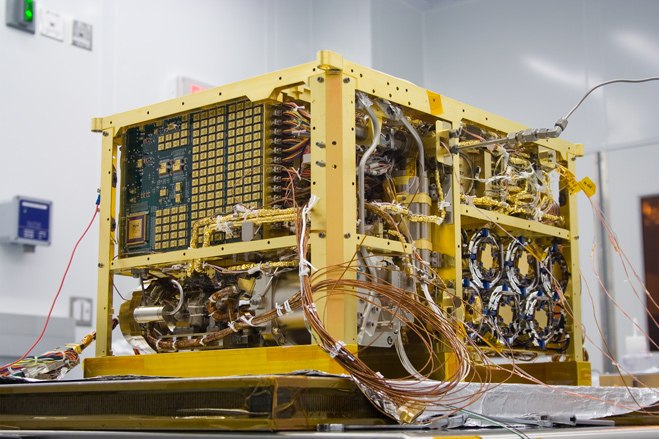
At the autumn meeting of the American Geophysical Union, scientists working with materials coming from Mars told about the first full-scale study of the Martian breed, including the SAM instrument. They analyzed a pinch of Martian sand, with which Curiosity worked from 57 to 101 sol (Martian day) of their stay on the surface of the planet.
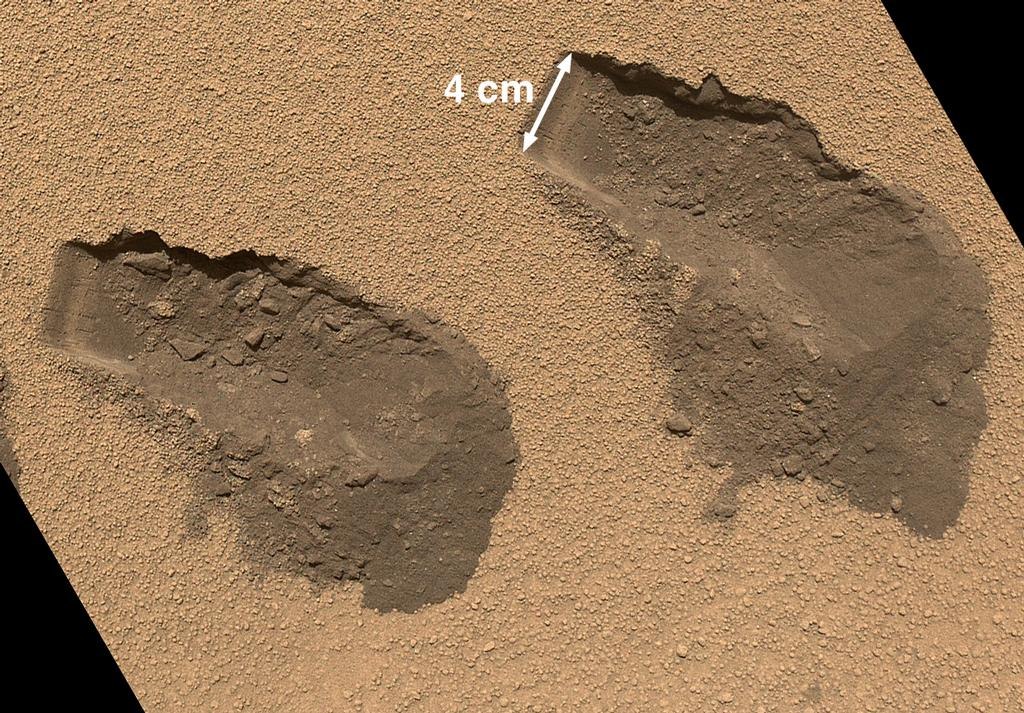
A hint of organic found. At least SAM has registered four chlorine-containing organic compounds, including chloromethane, however, NASA is not sure of their Martian origin. It is likely that the hydrocarbon brought with them. Research and search for organics will continue.
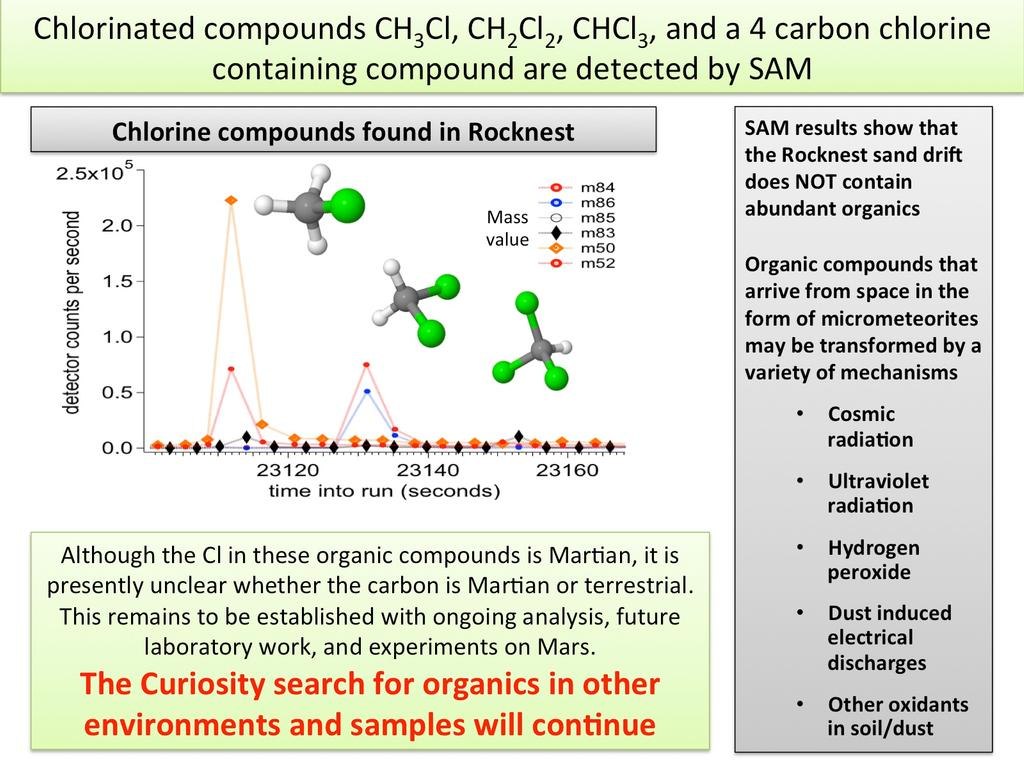
In the meantime, NASA believes that there is no convincing evidence of finding organics on Mars .
')
Curiosity stood 40 days at a small sand dune, which piled up at a heap of stones.
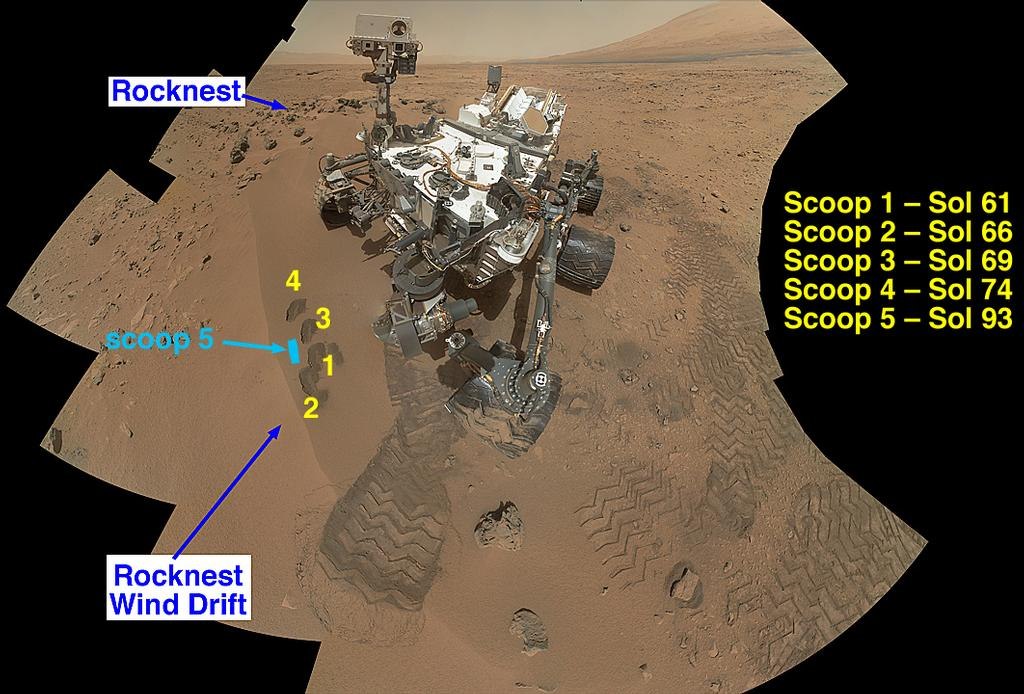
This sand was shot with a ChemCam laser.
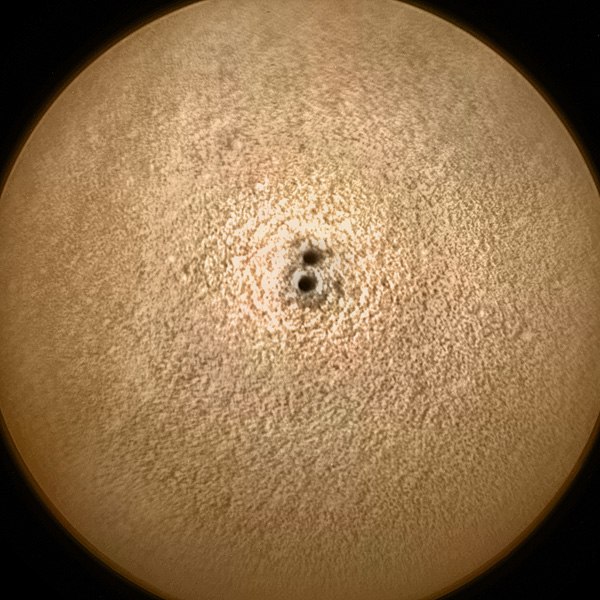
We irradiated with alpha rays from the APXS instrument and realized that the sample under study was not much different from what was studied in other parts of Mars.

Conducted his first study of geological instrument CheMin - by X-ray spectrometry and diffraction. This method allows you to determine the crystal lattice of a mineral, that is, in fact, determine the mineral, and not just its chemical ingredients. For example, a ChemCam or APXS laser will be able to identify carbon in the composition, but they do not distinguish graphite from diamond, and CheMin - with ease. And the conclusion was the same - ordinary volcanic sand.
Of course, the richest results were expected from SAM.

When heated, the samples determined the release of water, oxygen, sulfur, chlorine. All this indicates the content of sulfates and perchlorates in the soil. Perchlorates - salts of perchloric acid, first discovered the polar apparatus Phoenix Lander. Then it was a heavy blow to the hopes of an ancient life in the Martian ocean. All of us, thanks to advertising, we know that kills all known microbes. Curiosity results show that perchlorates are much more widespread than only in the circumpolar regions. Sulfur compounds indicate volcanic origin, and sulphate soil was recorded from satellites. This is also an argument against life - in sulfuric acid, microbes also feel uncomfortable, as in chlorine. SAM instrument results indicate orbital precision.
Curiosity first measured the ratio of hydrogen and deuterium in Martian water.
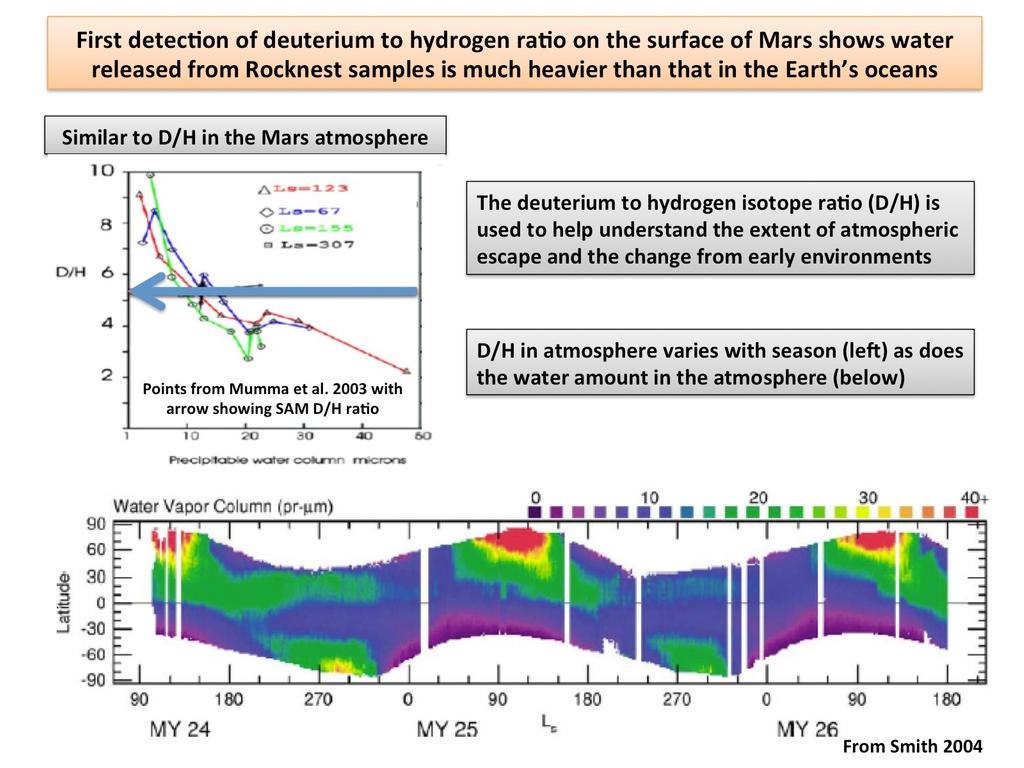
The preliminary conclusion of scientists is deuterium more than in terrestrial water. That is, the Martian water is heavier. This is explained by the fact that low gravity holds hydrogen atoms weaker and they more easily leave the planet.
When heated, the samples also recorded the release of several gases: water vapor, oxygen, carbon dioxide and sulfur dioxide.
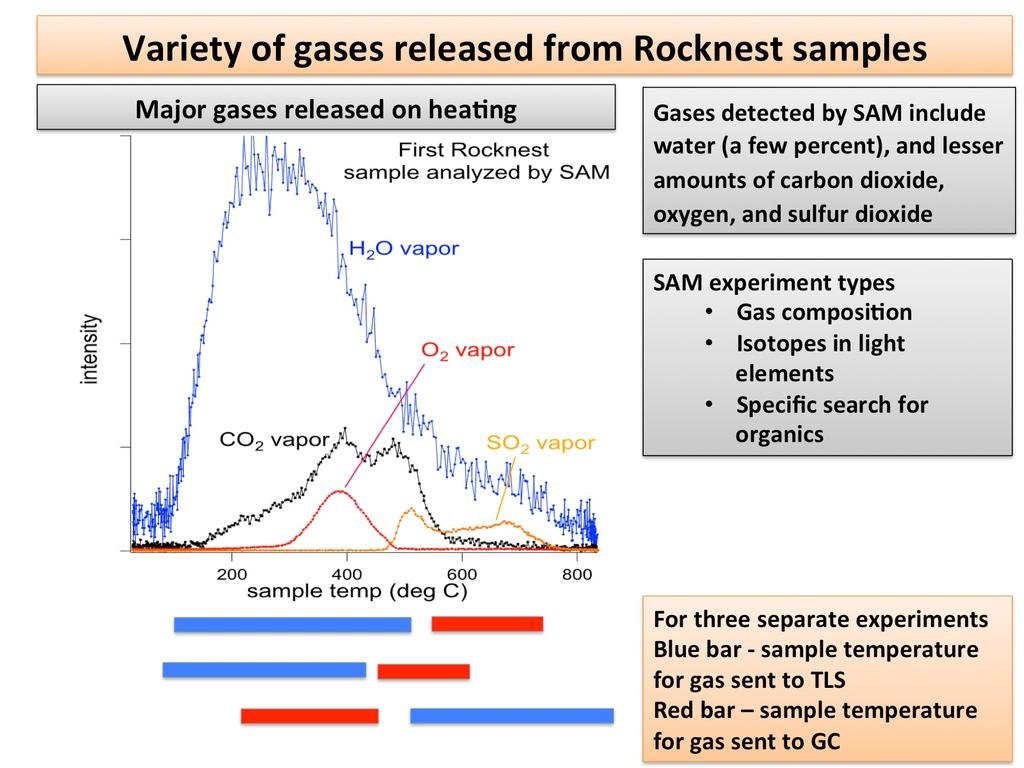
As a result of research devices show that sand is volcanic. This was clear even before the SAM results. Therefore, NASA did not expect sensations in this heap. Curiosity immediately after collecting the soil and analysis on board, immediately withdrew from the scene and drove on. Even this fact showed that they did not find anything interesting there. The truth is now that he is engaged in the re-examination of the stored sample. I think the uncertain situation with organic matter will be clarified.
So, no sensation, only a harsh scientific routine. And although this was to be expected, many were not satisfied. Even when NASA announced in advance that there was no Organic , in response to a flurry of rumors in the media, conspiracy conversations broke out that NASA did find something, but after seeing the reaction of the people, they hurried to hide it in the hangar at Base 51. Let's We will understand what it could find and why it is not recognized.
For this we will need to see what it was looking for and what it could find.

The SAM instrument is the dream of every geologist. These are three devices in one, in volume with a microwave weighing 40 kg. It is a quadrupole mass spectrometer (QMS), a gas chromatograph (GC), and a tunable laser spectrometer (TLS). In addition, they are serviced by two mechanical systems.
SAM devices investigate gas environments, and it is possible to drive the same gas sample through all three devices or examine only one or two; the CSPL Chemical and Processing Laboratory Separation System is responsible for this work. Solid samples are subject to heating in a quartz furnace up to 1000 ° C. For this, there is a System for manipulating solid samples (SMS).

For atmospheric sampling micro-valves and gas pipes are provided. For solid samples, there are holes in the pick-up points in the upper part of the rover body. The prepared soil is filled there with a manipulator that can scoop sand or collect flying crumbs when using a drill.
On one of the two tubes, the sand goes to a metal drum, in which 74 containers are provided - cups. The disk is turned and with a revolving principle delivers the cup with the contents into the oven. Then, under the influence of temperature, gases are released from the sample and sent to the study.

Inside SAM, devices are connected by a system of microvalves, pumps, pressure sensors, pressure regulators, chemical scrubbers and gas scavengers and a carrier gas balloon (Helium-4 is used).
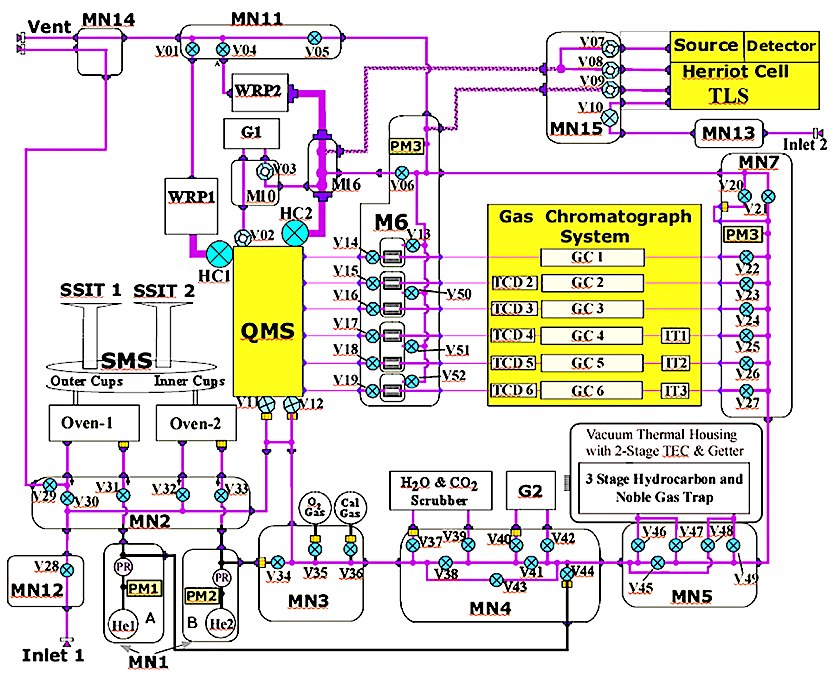
A quadrupole mass spectrometer makes it possible to measure the ratio of mass to charge of a substance with high accuracy and to determine isotopes.
Gas chromatograph - the main tool for searching organic substances.

It has six columns for the separation of complex mixtures of organic compounds, which are then recorded by a mass spectrometer and thermal conductivity detectors. The detection limit of the device is one part per billion.
A tunable dual-channel laser spectrometer detects CH4, H2O, and CO2 and the 13C / 12C, 18O / 16O and 17O / 16O isotope ratios in carbon dioxide, D / H in water, and 13C / 12C in methane.
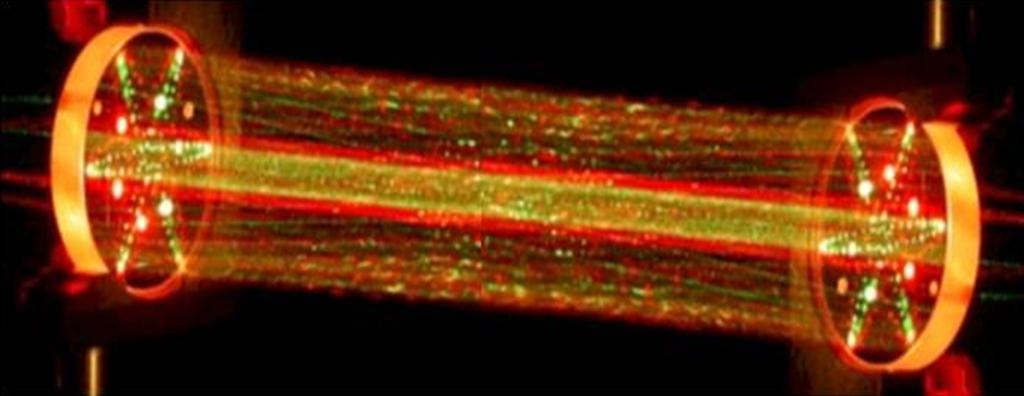
Sensitivity to atmospheric gases is <1 billion and the detection limit can be significantly reduced when methane is enriched in the Chemical and Process Laboratory's Separation System.
In order to control the quality of the analysis, the instrument stores a reserve of calibration gases, which will be analyzed with a certain frequency during the entire service life of the instrument. Also, the rover with a few fluorocarbon samples, which it will control the detection quality of organic matter.
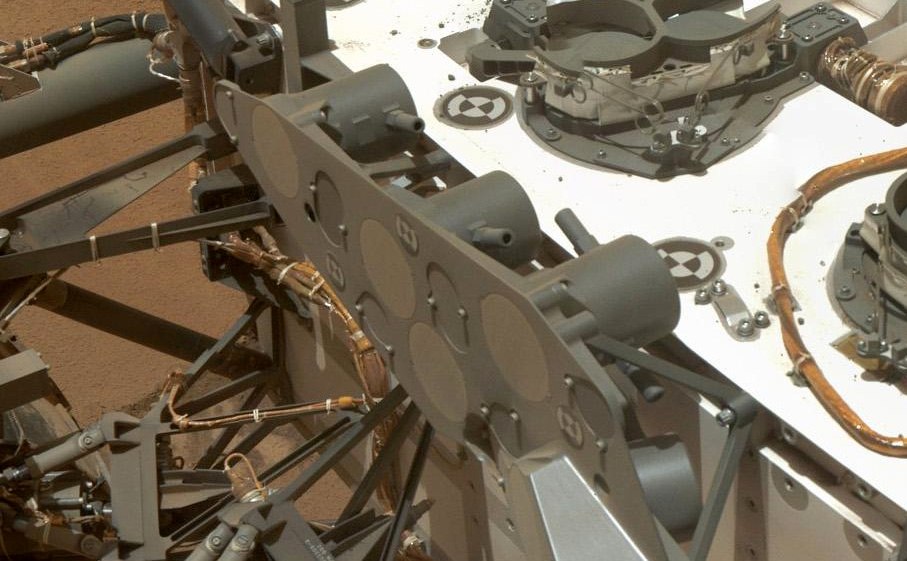
The device is able to distinguish organic matter of biological origin and non-biological. That is, in fact, the device can detect life, although such a goal is not set before the rover. True, he will not be able to determine how this life turned into biological organics — by roasting in his oven or a million years ago under solar ultraviolet radiation.
If the device detects an interesting sample rich in organics, for a more complete study, it uses one of 9 clogged cups in the rotor feeding the samples into the furnace. In these cups - a liquid solvent, which allows you to do without heating, and therefore avoid burning organic matter in the furnace.
The durability of the SAM is determined by the number of these cups with solvent, so they will be extremely economical to consume. The gas chromatograph will operate until the carrier gas in the cylinder is exhausted. However, remembering how NASA pulled out a resource from previous rovers, I would not be surprised if in five years they would adapt the Martian atmosphere as a carrier. Maybe the analysis will be “dirty”, but better than this.
SAM research has prospects not only in the detection of organic matter. Analyzes of Viking Lander in 1976 showed that the Martian atmosphere is enriched in heavy isotopes of hydrogen, nitrogen, argon. The composition of these gases determined that a certain type of meteorites - SNC, falling to Earth, has a Martian origin - studied the gas bubbles inside these meteorites.
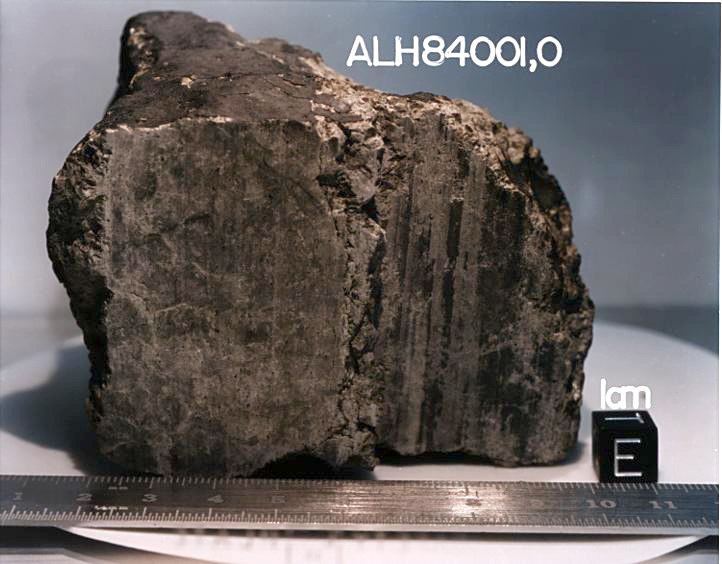
But scientists are not completely confident. If a more thorough analysis of the Martian atmosphere on the enrichment of xenon isotopes is carried out, then the final confirmation will be given that SNC meteorites are really Martian. They are still considered as such now, but forever doubting scientists need definitive iron proof, more precisely in this case xenon proof. That is, SAM in several breaths will do what the whole modern space program is not capable of yet - enrich terrestrial science with several kilograms of Martian breed. At the same time, he will show which breed is polluted by earth elements, and which has been preserved in its original form. Thanks to these meteorites, we will receive information about how the atmosphere of Mars evolved, because they all broke off from Mars at different times, and therefore they brought samples of that air in their pores. It turns out SAM and in the role of a time machine will play.
Thus, SAM studies are epochal in any case, whether they find organic there or not. John Grotzinger said that even if they find oil there, they will not hide it and will happily share the discovery with the world community. And the whole Curiosity team does not tire of reminding - this is only the beginning, these are only the first tests, the multi-year mission, so there will be more discoveries.
Let's go back to conspiracy theories. Those who have little idea of journalistic cuisine, the whole story is "found-not-found" seems like a conspiracy by NASA: intrigue, stuffing, dising. They say NASA checked that it’s better not to tell people about organics and pretend to be a hose. Some kind of American cover-taker decided that NASA had a ban on reports of alien life found due to fear of mass suicides and the insanity of all believers.
Only conspiracy does not take into account the fact that Martian organic was officially discovered in 1996. Then NASA was not afraid that the crowds of lemmings would reach for the ocean, and out of the kindness of their heart announced: "There was life on Mars - we found it."
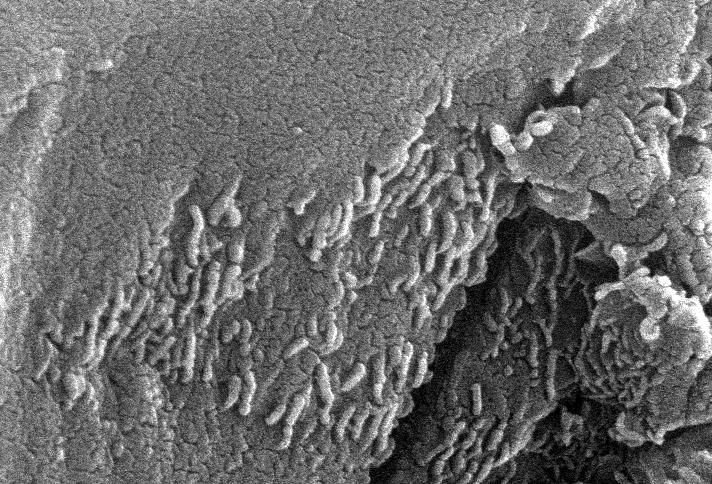
Clinton - the then US president - from the White House made an official statement for the nation. Then it turned out that they hurried.
Speech just about Martian meteorites. Yes, they are not 100% Martian yet, but 98% are already there, so NASA was not afraid to say a sensation. They demonstrated the filming of an electron microscope meteorite ALH84001
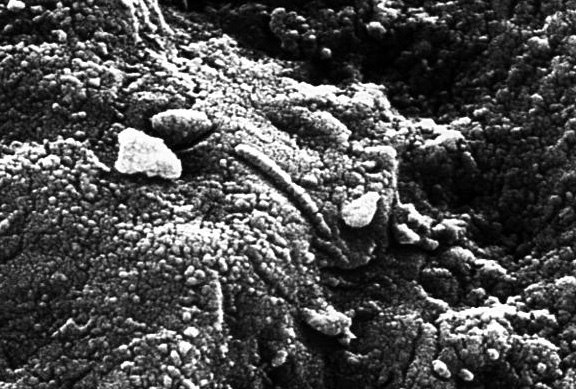
In their opinion, they were fossilized Martian bacteria. True, a loud statement quickly cooled in the global scientific community. And for bacteria too small - 100 times smaller than the smallest terrestrial bacterium. And it is painfully similar to carbon crystals of igneous deep-seated igneous rocks.
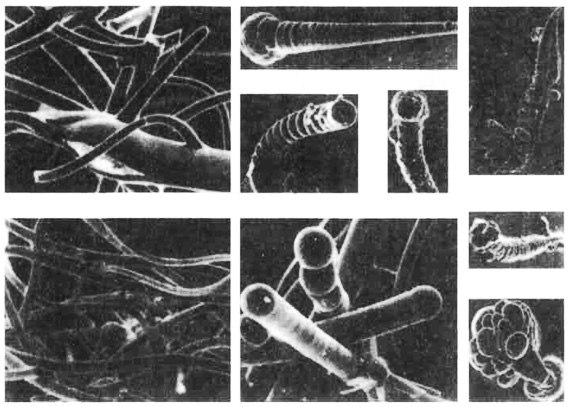
(kerite crystals C49H39O9 (S, N) 3 in pegmatite).
Russian scientists have made their contribution by proving that ALH84001 is not a Martian meteorite at all, but an ordinary chondrite.
In addition, cosmic organic matter differs from terrestrial biogenic organic matter in the isotopic content of water and oxygen, and has been studied quite well. That is, there is an opportunity to distinguish organic matter associated with life, from the cosmic "lifeless." Yes, yes, there is organic matter in space. There are organics in comets. On other planets, its shaft - on Jupiter, methane (organic) is greater than the mass of the Earth. Why are there Jupiter - there is organic matter on Mercury, just like water - just a few days ago it was announced.
That is, even if Curiosity found it on Mars, it could easily fly from space - the rover is in a giant 150-kilometer crater, and that whole one is strewn with smaller craters.

You just need to understand that organic is just carbon compounds, and there are millions of combinations and only a small part of them are involved in life. Finding organics on Mars and saying “life” is like finding iron there and saying “robots” ... Hmm ...
PS To those who hoped for organics or bacteria and were upset to say: do not worry, while Curiosity is trying out its strength and place there is not inclined to life. That will reach the mountain, there is an ancient clay, there is water erosion, it will be more interesting there.
PPS Author, in the process of working on this article :)

Video of the press conference: www.ustream.tv/recorded/27478475
Official Press Release: mars.jpl.nasa.gov

At the autumn meeting of the American Geophysical Union, scientists working with materials coming from Mars told about the first full-scale study of the Martian breed, including the SAM instrument. They analyzed a pinch of Martian sand, with which Curiosity worked from 57 to 101 sol (Martian day) of their stay on the surface of the planet.

A hint of organic found. At least SAM has registered four chlorine-containing organic compounds, including chloromethane, however, NASA is not sure of their Martian origin. It is likely that the hydrocarbon brought with them. Research and search for organics will continue.

In the meantime, NASA believes that there is no convincing evidence of finding organics on Mars .
')
Curiosity stood 40 days at a small sand dune, which piled up at a heap of stones.

This sand was shot with a ChemCam laser.

We irradiated with alpha rays from the APXS instrument and realized that the sample under study was not much different from what was studied in other parts of Mars.

Conducted his first study of geological instrument CheMin - by X-ray spectrometry and diffraction. This method allows you to determine the crystal lattice of a mineral, that is, in fact, determine the mineral, and not just its chemical ingredients. For example, a ChemCam or APXS laser will be able to identify carbon in the composition, but they do not distinguish graphite from diamond, and CheMin - with ease. And the conclusion was the same - ordinary volcanic sand.
Of course, the richest results were expected from SAM.

When heated, the samples determined the release of water, oxygen, sulfur, chlorine. All this indicates the content of sulfates and perchlorates in the soil. Perchlorates - salts of perchloric acid, first discovered the polar apparatus Phoenix Lander. Then it was a heavy blow to the hopes of an ancient life in the Martian ocean. All of us, thanks to advertising, we know that kills all known microbes. Curiosity results show that perchlorates are much more widespread than only in the circumpolar regions. Sulfur compounds indicate volcanic origin, and sulphate soil was recorded from satellites. This is also an argument against life - in sulfuric acid, microbes also feel uncomfortable, as in chlorine. SAM instrument results indicate orbital precision.
Curiosity first measured the ratio of hydrogen and deuterium in Martian water.

The preliminary conclusion of scientists is deuterium more than in terrestrial water. That is, the Martian water is heavier. This is explained by the fact that low gravity holds hydrogen atoms weaker and they more easily leave the planet.
When heated, the samples also recorded the release of several gases: water vapor, oxygen, carbon dioxide and sulfur dioxide.

As a result of research devices show that sand is volcanic. This was clear even before the SAM results. Therefore, NASA did not expect sensations in this heap. Curiosity immediately after collecting the soil and analysis on board, immediately withdrew from the scene and drove on. Even this fact showed that they did not find anything interesting there. The truth is now that he is engaged in the re-examination of the stored sample. I think the uncertain situation with organic matter will be clarified.
So, no sensation, only a harsh scientific routine. And although this was to be expected, many were not satisfied. Even when NASA announced in advance that there was no Organic , in response to a flurry of rumors in the media, conspiracy conversations broke out that NASA did find something, but after seeing the reaction of the people, they hurried to hide it in the hangar at Base 51. Let's We will understand what it could find and why it is not recognized.
For this we will need to see what it was looking for and what it could find.

The SAM instrument is the dream of every geologist. These are three devices in one, in volume with a microwave weighing 40 kg. It is a quadrupole mass spectrometer (QMS), a gas chromatograph (GC), and a tunable laser spectrometer (TLS). In addition, they are serviced by two mechanical systems.
SAM devices investigate gas environments, and it is possible to drive the same gas sample through all three devices or examine only one or two; the CSPL Chemical and Processing Laboratory Separation System is responsible for this work. Solid samples are subject to heating in a quartz furnace up to 1000 ° C. For this, there is a System for manipulating solid samples (SMS).

For atmospheric sampling micro-valves and gas pipes are provided. For solid samples, there are holes in the pick-up points in the upper part of the rover body. The prepared soil is filled there with a manipulator that can scoop sand or collect flying crumbs when using a drill.
On one of the two tubes, the sand goes to a metal drum, in which 74 containers are provided - cups. The disk is turned and with a revolving principle delivers the cup with the contents into the oven. Then, under the influence of temperature, gases are released from the sample and sent to the study.

Inside SAM, devices are connected by a system of microvalves, pumps, pressure sensors, pressure regulators, chemical scrubbers and gas scavengers and a carrier gas balloon (Helium-4 is used).

A quadrupole mass spectrometer makes it possible to measure the ratio of mass to charge of a substance with high accuracy and to determine isotopes.
Gas chromatograph - the main tool for searching organic substances.

It has six columns for the separation of complex mixtures of organic compounds, which are then recorded by a mass spectrometer and thermal conductivity detectors. The detection limit of the device is one part per billion.
A tunable dual-channel laser spectrometer detects CH4, H2O, and CO2 and the 13C / 12C, 18O / 16O and 17O / 16O isotope ratios in carbon dioxide, D / H in water, and 13C / 12C in methane.

Sensitivity to atmospheric gases is <1 billion and the detection limit can be significantly reduced when methane is enriched in the Chemical and Process Laboratory's Separation System.
In order to control the quality of the analysis, the instrument stores a reserve of calibration gases, which will be analyzed with a certain frequency during the entire service life of the instrument. Also, the rover with a few fluorocarbon samples, which it will control the detection quality of organic matter.

The device is able to distinguish organic matter of biological origin and non-biological. That is, in fact, the device can detect life, although such a goal is not set before the rover. True, he will not be able to determine how this life turned into biological organics — by roasting in his oven or a million years ago under solar ultraviolet radiation.
If the device detects an interesting sample rich in organics, for a more complete study, it uses one of 9 clogged cups in the rotor feeding the samples into the furnace. In these cups - a liquid solvent, which allows you to do without heating, and therefore avoid burning organic matter in the furnace.
The durability of the SAM is determined by the number of these cups with solvent, so they will be extremely economical to consume. The gas chromatograph will operate until the carrier gas in the cylinder is exhausted. However, remembering how NASA pulled out a resource from previous rovers, I would not be surprised if in five years they would adapt the Martian atmosphere as a carrier. Maybe the analysis will be “dirty”, but better than this.
SAM research has prospects not only in the detection of organic matter. Analyzes of Viking Lander in 1976 showed that the Martian atmosphere is enriched in heavy isotopes of hydrogen, nitrogen, argon. The composition of these gases determined that a certain type of meteorites - SNC, falling to Earth, has a Martian origin - studied the gas bubbles inside these meteorites.

But scientists are not completely confident. If a more thorough analysis of the Martian atmosphere on the enrichment of xenon isotopes is carried out, then the final confirmation will be given that SNC meteorites are really Martian. They are still considered as such now, but forever doubting scientists need definitive iron proof, more precisely in this case xenon proof. That is, SAM in several breaths will do what the whole modern space program is not capable of yet - enrich terrestrial science with several kilograms of Martian breed. At the same time, he will show which breed is polluted by earth elements, and which has been preserved in its original form. Thanks to these meteorites, we will receive information about how the atmosphere of Mars evolved, because they all broke off from Mars at different times, and therefore they brought samples of that air in their pores. It turns out SAM and in the role of a time machine will play.
Thus, SAM studies are epochal in any case, whether they find organic there or not. John Grotzinger said that even if they find oil there, they will not hide it and will happily share the discovery with the world community. And the whole Curiosity team does not tire of reminding - this is only the beginning, these are only the first tests, the multi-year mission, so there will be more discoveries.
Let's go back to conspiracy theories. Those who have little idea of journalistic cuisine, the whole story is "found-not-found" seems like a conspiracy by NASA: intrigue, stuffing, dising. They say NASA checked that it’s better not to tell people about organics and pretend to be a hose. Some kind of American cover-taker decided that NASA had a ban on reports of alien life found due to fear of mass suicides and the insanity of all believers.
Only conspiracy does not take into account the fact that Martian organic was officially discovered in 1996. Then NASA was not afraid that the crowds of lemmings would reach for the ocean, and out of the kindness of their heart announced: "There was life on Mars - we found it."

Clinton - the then US president - from the White House made an official statement for the nation. Then it turned out that they hurried.
Speech just about Martian meteorites. Yes, they are not 100% Martian yet, but 98% are already there, so NASA was not afraid to say a sensation. They demonstrated the filming of an electron microscope meteorite ALH84001

In their opinion, they were fossilized Martian bacteria. True, a loud statement quickly cooled in the global scientific community. And for bacteria too small - 100 times smaller than the smallest terrestrial bacterium. And it is painfully similar to carbon crystals of igneous deep-seated igneous rocks.

(kerite crystals C49H39O9 (S, N) 3 in pegmatite).
Russian scientists have made their contribution by proving that ALH84001 is not a Martian meteorite at all, but an ordinary chondrite.
In addition, cosmic organic matter differs from terrestrial biogenic organic matter in the isotopic content of water and oxygen, and has been studied quite well. That is, there is an opportunity to distinguish organic matter associated with life, from the cosmic "lifeless." Yes, yes, there is organic matter in space. There are organics in comets. On other planets, its shaft - on Jupiter, methane (organic) is greater than the mass of the Earth. Why are there Jupiter - there is organic matter on Mercury, just like water - just a few days ago it was announced.
That is, even if Curiosity found it on Mars, it could easily fly from space - the rover is in a giant 150-kilometer crater, and that whole one is strewn with smaller craters.

You just need to understand that organic is just carbon compounds, and there are millions of combinations and only a small part of them are involved in life. Finding organics on Mars and saying “life” is like finding iron there and saying “robots” ... Hmm ...
PS To those who hoped for organics or bacteria and were upset to say: do not worry, while Curiosity is trying out its strength and place there is not inclined to life. That will reach the mountain, there is an ancient clay, there is water erosion, it will be more interesting there.
PPS Author, in the process of working on this article :)

Video of the press conference: www.ustream.tv/recorded/27478475
Official Press Release: mars.jpl.nasa.gov
Source: https://habr.com/ru/post/161223/
All Articles